Holy and Great Monastery of Vatopedi Mount Athos – English Publications
29 Ιουνίου 2023

The Elder Joseph the Hesychast (1897-1959): Struggles – Experiences – Teachings
The life of the Elder Joseph the Hesychast is a shining contemporary example of heroism and self-denial, struggle against the passions of the old man and the demons, and resurrection ‘of the new nature created after the likeness of God’. The Blessed Elder, having himself arrived at the longed for dispassion, which in the language of the Fathers is called ‘Love’, gave a new thrust to Athonite Monasticism towards the acquisition of the virtues, mental prayer and the retaining of the mind, the nous. With his persistence in the rigour of turning the mind inward and in the labour of the intellect the Elder revived the Palamite Theology and brought it back to the forefront. Six great monasteries of the Holy Mountain have been repopulated by his spiritual children, and a multitude of other monastics and laymen follow his spiritual teaching and his radiant example. His Life is simple; he did not finish even his primary studies; by his life, however, he has put to shame the ‘wise’ of the world. Through his life and prayers may we all arrive at least to some measure at this divine simplicity.
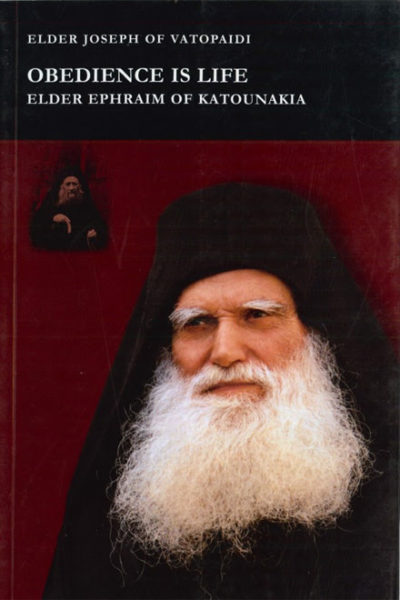
Obedience is Life: Elder Ephraim of Katounakia (1912 – 1998)
Christ glorifies His saints, and they glorify His Body the Church as His genuine members. One of these godly men is the Athonite Elder Ephraim of Katounakia, who reposed in 1998. He lived 65 years of strict ascetism on the Holy Mountain (42 of which were as a monk in obedience), far from the world, poor according to the world, but rich in the divine charismata of the Holy Spirit that he had acquired, and was shown to be an obedient disciple filled with spiritual gifts.
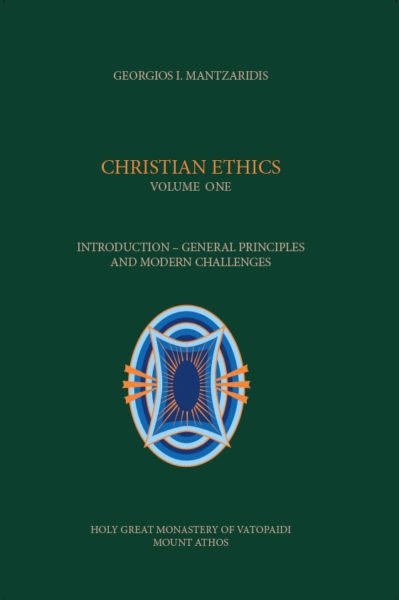
Christian Ethics” (Volume One), Introduction – General Principles and Modern Challegnes
Christian Ethics as a branch of learning that refers to man’s moral life, differs greatly from the ethics of the ancient Greek Philosophers or the ethics of other cultures and civilizations. Christian Ethics is based on the person and ethos of Christ. The God-Man Christ displayed the perfect God and the perfect man in His Person. The perfect man activates the highest charismatic recognition of his nature, which is theosis. Christ Himself showed the world the way that leads to theosis. He lived on the earth in a way that was an example to us, or, as the Apostle Paul points out, “leaving us an example, that you should follow His steps” (see 1 Peter 2:21) ….
Order from Vatopedi Book Store
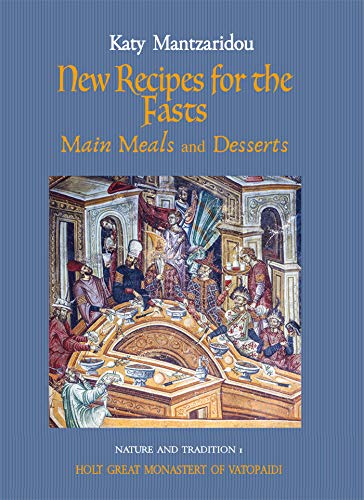
New Recipes for the Fasts: Main Meals and Desserts (Nature and Tradition Book 1)
“This book is ideal and useful for those who are fasting, especially the young, so that they will love the fast and conform to the canons of our Church. The multitudes of visitors to our Monastery and, indeed, all the other Monasteries on the Holy Mountain are always impressed by the food we prepare for the fasts, even if it is without oil, because the first principle on which the chef operates is his love for his brothers and for the guests.”
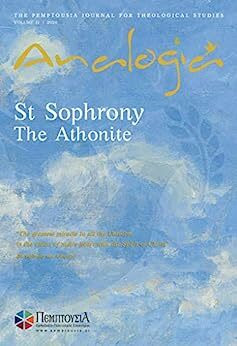
St Sophrony the Athonite
I think that fr Sophrony’s theology has greatly contributed, in our times, to edify a Christian anthropology, which while respecting the Patristic tradition, at the same time expresses itself in a uniquely personal contemporary way. And even more than that: St Sophrony became himself a living flame of God’s Grace, by realising in himself this analogical consubstantiality described above. (from the Editorial)Contents: 1. The Dialogue of Elder Sophrony with his generation within his biography of Saint Silouan, ARCHIMANDRITE ZACHARIAS, 2. Theology as a Spiritual State in the life and the writings of St Sophrony the Athonite, ARCHIMANDRITE PETER, 3. Godforsakenness according to St Sophrony the Athonite, ARCHIMANDRITE EPHRAIM, 4. St Sophrony’s ‘Testament’: The Trinity as a model for monastic community, HIEROMONK NIKOLAI SAKHAROV, 5. The experience of temporality according to St Sophrony, GEORGIOS I. MANTZARIDIS, 6. Ecstasy as Descent: The Palamite and Maximian bedrock of the theology of St Sophrony, NIKOLAOS LOUDOVIKOS, 7. St Sophrony’s image of Christ in a liturgical perspective, NUN GABRIELA. Read Analogia Online here
ANALOGIA JOURNAL: THE PEMPTOUSIA JOURNAL FOR THEOLOGICAL STUDIES
Analogia is a peer-reviewed academic journal dedicated to the scholarly exposition and discussion of the theological principles of the Christian faith. A distinguishing feature of this journal will be the effort to advance a dialogue between Orthodox Christianity and the views and concerns of Western modes of theological and philosophical thought. A key secondary objective is to provide a scholarly context for the further examination and study of common Christian sources.
Though theological and philosophical topics of interest are the primary focus of the journal, the content of Analogia will not be restricted to material that originates exclusively from these disciplines. Insofar as the journal seeks to cultivate theological discourse and engagement with the urgent challenges and questions posed by modernity, topics from an array of disciplines will also be considered, including the natural and social sciences. As such, solicited and unsolicited submissions of high academic quality containing topics of either a theological or interdisciplinary nature will be encouraged.
In an effort to facilitate dialogue, provision will be made for peer-reviewed critical responses to articles that deal with high-interest topics. Analogia strives to provide an interdisciplinary forum wherein Christian theology is further explored and assumes the role of an interlocutor with the multiplicity of difficulties facing modern humanity.
Analogia is printed three times a year.
The Analogia Journal for Theological Studies is the academic arm of the acclaimed web magazine PEMPTOUSIA (www.pemptousia.gr, www.pemptousia.com).
Both Pemptousia and Analogia are published by St Maxim the Greek Institute.
Check Analogia Journal Volumes here
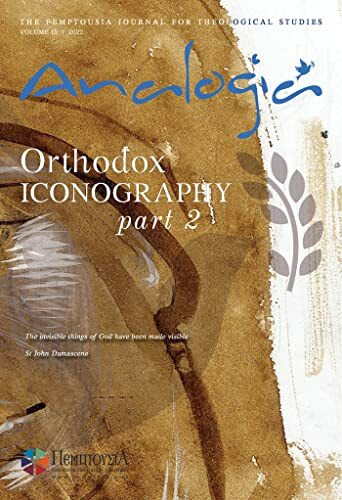
Nachos
Tortilla chips, salsa, jalapeños, sour cream and cheddar cheese baked in the oven and topped with guacamole. Read Analogia Online here

Ecclesial Dialogues: Easte and West I
The beginning of the Roman Catholic/Orthodox Theological dialogue during the 20th century raised to some high hopes for an imminent canonical unity between the two Denominations, and this, though premature, is not of course to be blamed; it is impossible for any contemporary Christian theologian not to suffer from the division within this very womb of the ontological unification of all things, which is the Church of Christ—precisely because this division gives to many the impression of a fragmentation of the Church’s very being and subsequently weakens her witness.
Contents: 1. Crusades, Colonialism, and the Future Possibility Christian Unity, GEORGE E. DEMACOPOULOS, 2. Approaching the Future as a Friend Without a Wardrobe of Excuses, ADAM A.J. DEVILLE, 3. Anglicans and the Una Sancta, JONATHAN GOODALL, 3. Eucharistic Doctrine and Eucharistic Devotion, ANDREW LOUTH, 4. A Spectre Is Haunting Intercommunion, SOTIRIS MITRALEXIS, 5. The origins of an ecumenical church: links, borrowings, and inter-dependencies, THOMAS O’LOUGHLIN, 6. ‘Unity of the Churches—An Actual Possibility: The Rahner-Fries Theses and Contemporary Catholic-Orthodox Dialogue’, EDWARD A. SIECIENSKI, 7. Schmemann’s Approach to the Sacramental Life of the Church: its Orthodox Positioning, its Catholic Intent, MANUEL SUMARES. Read Analogia Online here




